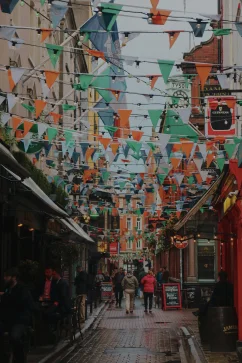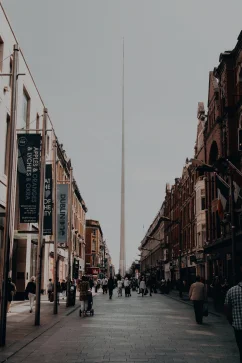Exploring Paris’ Cultural Gems
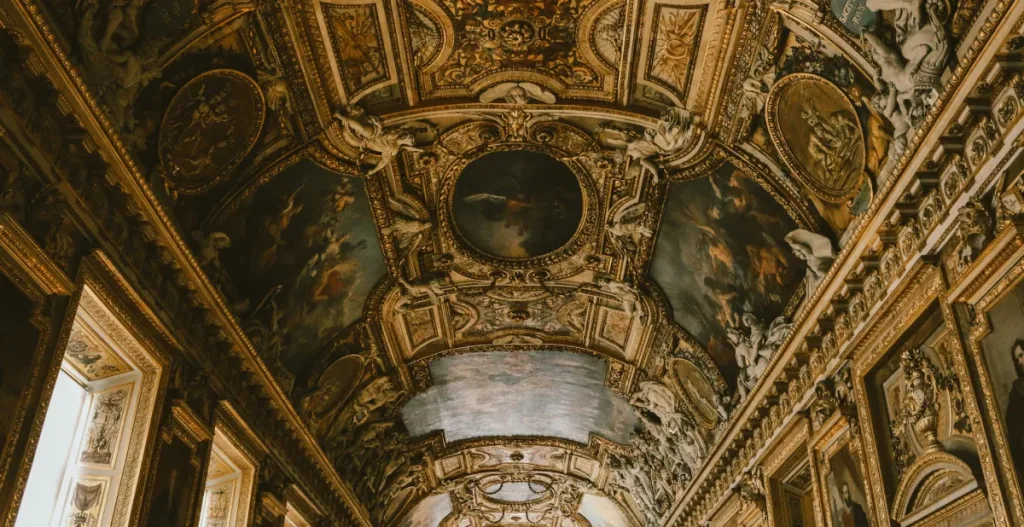
Paris, often referred to as the “City of Light,” is a global epicenter of art, history, and culture. The city boasts a wealth of museums that captivate the imagination of visitors from around the world. In this article, we will delve into the enchanting world of Parisian museums, each offering a unique journey through time and artistic expression.
The Louvre Museum
The Louvre Museum, often simply referred to as “The Louvre,” is an iconic institution located in the heart of Paris, France. It is not only one of the world’s most famous museums but also one of the largest and most visited, attracting millions of art enthusiasts and tourists from all corners of the globe each year. With its remarkable collection spanning thousands of years, The Louvre is a testament to human creativity and a beacon of culture.
What is the story behind the Louvre?
The Louvre’s history is as captivating as the artworks it houses. Originally built as a fortress in the late 12th century by King Philip II, it was later transformed into a royal palace during the Renaissance. It wasn’t until the French Revolution in the late 18th century that the Louvre became a public museum, opening its doors to the masses. Today, the museum spans over 650,000 square feet and is divided into various departments, showcasing an astonishing range of art and artifacts.
The Louvre Museum’s art collection
One of the Louvre’s most famous residents is Leonardo da Vinci’s enigmatic masterpiece, the “Mona Lisa.” This iconic painting, with its subtle smile and mesmerizing gaze, attracts throngs of admirers daily. But the Mona Lisa is just the tip of the iceberg when it comes to the museum’s extensive collection.
The Louvre boasts an impressive array of art from various cultures and time periods. Its departments cover everything from antiquities, including Egyptian, Greek, and Roman artifacts, to European paintings, decorative arts, and sculptures. Notable pieces include the Venus de Milo, the Winged Victory of Samothrace, and the classical paintings of Jacques-Louis David.
Architecture of The Louvre Museum
The Louvre’s architectural beauty is as captivating as the art within its walls. The museum’s most recognizable feature is the striking glass pyramid at its entrance, designed by architect I. M. Pei. The juxtaposition of this modern architectural marvel against the backdrop of the historic palace is a testament to Paris’s harmonious blend of tradition and innovation.
Louvre Museum Special Exhibitions
In addition to its permanent collection, the Louvre regularly hosts special exhibitions that provide fresh perspectives on various aspects of art and history. These exhibitions often feature loans from other institutions worldwide and offer visitors a chance to see rare and significant artworks up close.
Where is the Louvre Museum situated?
The Louvre Museum is situated at Rue de Rivoli 75001 Paris France. The Louvre Museum is one of the world’s most famous and visited museums, and significant efforts have been made to make it accessible to all visitors.
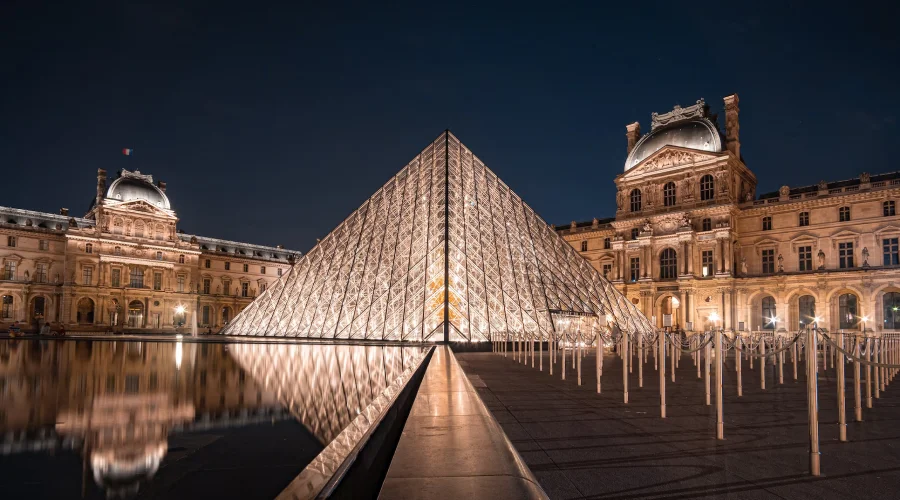
Musée d’Orsay
The Musée d’Orsay, located in the heart of Paris, is one of the world’s most renowned museums, celebrated for its exceptional collection of art from the 19th and early 20th centuries. Housed in a stunning Beaux-Arts railway station, this cultural gem is a testament to the artistic evolution of that era. In this article, we will explore the history, architecture, and the remarkable collection of the Musée d’Orsay.
What is the story behind the Musée d’Orsay?
The history of the Musée d’Orsay is intrinsically linked to the Gare d’Orsay, a grand railway station constructed for the 1900 Exposition Universelle (World’s Fair). Designed by architect Victor Laloux, the station featured an exquisite blend of Beaux-Arts and Art Nouveau architectural styles. Its iconic clock tower, soaring glass roof, and ornate details make it a masterpiece in its own right.
The station served as a hub for trains coming from southwestern France but gradually lost its significance with the advent of electric trains and the restructuring of the French railway system. By 1939, it had ceased operations as a train station.
Transformation into a Museum
The fate of the Gare d’Orsay changed dramatically in the 1970s when the French government decided to convert it into a museum dedicated to art from the 19th and early 20th centuries. After an extensive renovation, the Musée d’Orsay opened its doors to the public in December 1986.
The Museum’s Collection
The Musée d’Orsay boasts an extensive collection of art that spans from 1848 to 1914, covering the Impressionist and Post-Impressionist movements. It houses works by some of the most celebrated artists in history, including Vincent van Gogh, Claude Monet, Edgar Degas, Auguste Rodin, and Pierre-Auguste Renoir.
Visitors to the museum can immerse themselves in the revolutionary art movements of the era, from the ethereal landscapes of Monet’s water lilies to the emotional intensity of van Gogh’s “Starry Night Over the Rhône.” The collection also includes sculptures, decorative arts, and photography, offering a comprehensive view of the cultural diversity of the time.
The Impressionist Masterpieces
The Musée d’Orsay’s collection of Impressionist paintings is undoubtedly one of its crown jewels. With works like Monet’s “Water Lilies” and “Impression, Sunrise,” visitors can witness the birth of a movement that sought to capture the fleeting effects of light and color.
The Iconic Clock
The giant clock that adorns the museum’s façade has become a symbol of the Musée d’Orsay. Its panoramic view of the Seine River and the city of Paris is an unforgettable experience. Visitors often find themselves gazing through the clock’s transparent face, a portal to both the past and the present.
Educational and Cultural Hub
Beyond its remarkable collection, the Musée d’Orsay serves as a vital educational and cultural hub. It hosts temporary exhibitions, lectures, and workshops that enrich the understanding of art history and contemporary culture. The museum’s commitment to accessibility includes guided tours, multilingual signage, and facilities for visitors with disabilities.
Where is the Musée d’Orsay situated?
The Musée d’Orsay is at 1 Rue de la Légion d’Honneur 75007 Paris, France. The museum’s central location in Paris makes it easily accessible by various means of transportation.
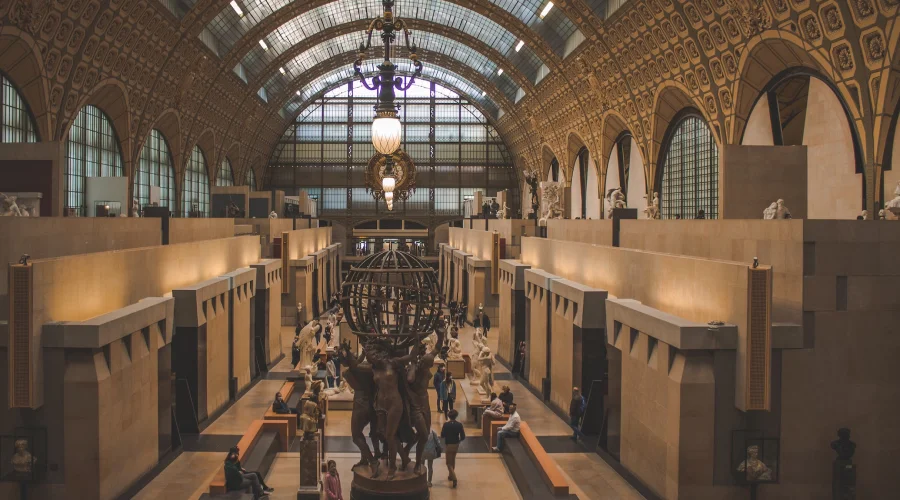
Centre Pompidou
The Centre Pompidou, also known as the Centre Georges Pompidou, is an iconic institution that stands as a testament to the fusion of art and architecture in the heart of Paris. This groundbreaking cultural center, dedicated to modern and contemporary art, has been a symbol of innovation since its inception. In this article, we will explore the history, architecture, and extraordinary collection housed within the Centre Pompidou.
A Visionary Concept
The Centre Pompidou owes its existence to a visionary idea championed by then-French President Georges Pompidou in the late 1960s. He envisioned a cultural center that would be a hub for the arts, bringing together various forms of contemporary expression under one roof. To realize this dream, a design competition was held, which led to the selection of architects Renzo Piano, Richard Rogers, and Gianfranco Franchini.
Architecture as Art at the Centre Pompidou
The architectural design of the Centre Pompidou is a radical departure from traditional museum structures. It is characterized by its exposed skeletal frame, brightly colored pipes, and a transparent façade, all of which are intended to reveal the inner workings of the building. This “inside-out” approach was revolutionary at the time and continues to be a source of fascination for visitors.
The building’s structural elements, such as escalators and elevators, are located on the exterior, freeing up vast, flexible spaces inside for exhibitions and activities. The architects’ intention was to create a building where the architecture itself becomes a form of art, blurring the lines between the structure and the art it houses.
The Centre Pompidou’s collection
The Centre Pompidou’s collection spans the 20th and 21st centuries and includes a diverse range of art forms, from painting and sculpture to photography, film, design, and new media. The museum is particularly renowned for its extensive collection of works by prominent artists such as Pablo Picasso, Salvador Dalí, Wassily Kandinsky, and Joan Miró, among others.
Visitors can explore the development of modern and contemporary art movements, from Cubism and Surrealism to Abstract Expressionism and Pop Art. The museum also hosts temporary exhibitions that showcase the latest trends in contemporary art, making it a dynamic and ever-evolving institution.
Multifaceted Cultural Hub
The Centre Pompidou is not only a museum but also a vibrant cultural hub. It houses a public library, a cinema, a performance space, and numerous educational facilities. The Stravinsky Fountain, located just outside the museum, features whimsical sculptures and is a popular gathering place for visitors and locals alike.
Education and Accessibility
The museum is committed to making art accessible to all. It offers a wide range of educational programs, guided tours, and workshops for visitors of all ages. Additionally, the Centre Pompidou has made efforts to ensure accessibility for people with disabilities, including ramps, elevators, and accessible restrooms.
Where is the Centre Pompidou situated?
The Centre Pompidou is located at Place Georges-Pompidou 75004 Paris, France. The Centre Pompidou is centrally located in Paris and is easily accessible by various means of transportation.
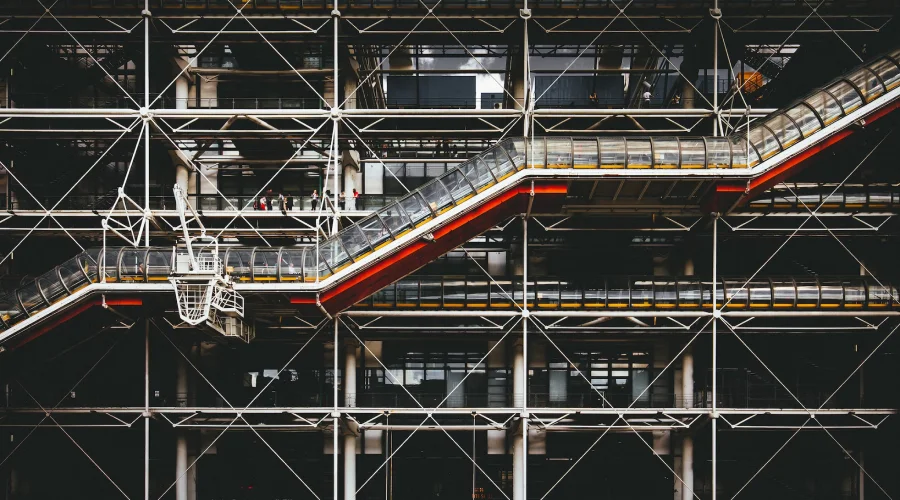
Rodin Museum
The Rodin Museum in Paris stands as a testament to the unparalleled talent of Auguste Rodin, one of the most influential sculptors in history. Nestled in the heart of the French capital, this museum is a sanctuary for art lovers and a profound tribute to the world of sculpture. In this article, we will delve into the rich history, captivating collections, and enduring legacy of the Rodin Museum in Paris.
What is the story behind the Rodin Museum?
Housed in the 18th-century Hôtel Biron, a stunning mansion with beautiful gardens, the Rodin Museum provides the perfect backdrop for Rodin’s masterpieces. The building itself is a work of art, with its elegant architecture and charming interior spaces.
Rodin’s Masterpieces
The Rodin Museum is best known for its extensive collection of sculptures by Auguste Rodin, including some of his most iconic works. Among the highlights are “The Thinker,” “The Kiss,” “The Gates of Hell,” and “The Burghers of Calais.” These sculptures showcase Rodin’s unparalleled ability to capture human emotion and movement in bronze and marble.
“The Thinker,” in particular, has become an iconic symbol of contemplation and intellectual pursuit. Its contemplative pose and muscular form have made it instantly recognizable worldwide.
Gardens of Inspiration
The museum’s lush gardens, designed by Rodin himself, are an integral part of the experience. Visitors can stroll through these beautifully landscaped grounds, which are dotted with some of Rodin’s sculptures. The gardens offer a serene and contemplative space where visitors can appreciate the harmony between art and nature.
Beyond Rodin
While Rodin’s work takes center stage, the museum also features a selection of works by other artists who were inspired by or collaborated with Rodin. This broader perspective provides context for understanding the evolution of sculpture during Rodin’s era and its impact on subsequent generations of artists.
Educational Offerings
The Rodin Museum offers a range of educational programs, including guided tours, workshops, and lectures, making it an ideal destination for both art enthusiasts and students of all ages. These programs provide insights into Rodin’s creative process, his influences, and the historical significance of his work.
Where is the Rodin Museum situated?
The Rodin Museum is located at 79 Rue de Varenne 75007 Paris, France. The Rodin Museum is centrally located in Paris and is easily accessible by various means of transportation
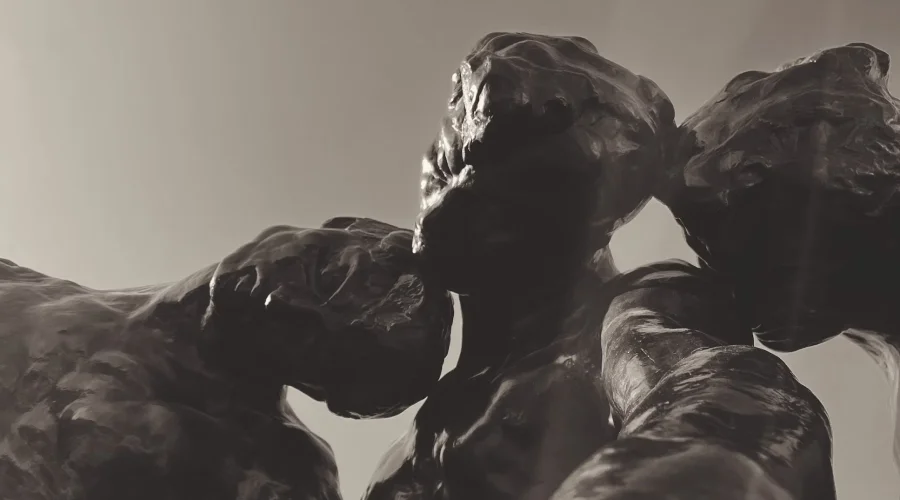
The Museum of Decorative Arts
The Museum of Decorative Arts (Musée des Arts Décoratifs) in Paris is a haven for lovers of art, design, and craftsmanship. Located in the historic district of the Louvre Palace, this museum offers a captivating journey through the evolution of decorative arts, design, and fashion. In this comprehensive report, we will delve into the museum’s history, collections, educational programs, and its significance in preserving and celebrating the world of decorative arts.
Historical Significance
The Museum of Decorative Arts in Paris was established in 1882 with the mission of preserving and showcasing the decorative arts and design of various eras. It occupies a portion of the Louvre Palace, which adds to its historical charm and significance.
Collections of the Museum of Decorative Arts
The museum’s vast collection spans a wide range of decorative arts, design, and fashion from different historical periods. Key highlights include:
- Furniture:The museum boasts an exquisite collection of period furniture, showcasing the evolution of design from the Renaissance to Art Deco. Visitors can admire the craftsmanship and creativity of artisans from different eras.
- Fashion: The museum’s fashion collection features an impressive array of garments, accessories, and textiles. It includes pieces from renowned designers such as Chanel, Dior, and Yves Saint Laurent, allowing visitors to trace the evolution of French fashion.
- Decorative Arts: The collection includes ceramics, glassware, textiles, wallpaper, and decorative objects that offer insights into the changing tastes and styles of different time periods.
- Jewelry: The museum’s jewelry collection is a testament to the artistry and innovation of jewelers over the centuries. It features pieces that range from the elegant and understated to the opulent and extravagant.
Educational Programs
The Museum of Decorative Arts is dedicated to education and offers a range of programs to engage and enlighten visitors:
- Exhibitions: The museum regularly hosts temporary exhibitions that explore specific themes, artists, or design movements. These exhibitions provide fresh perspectives on decorative arts and design.
- Guided Tours: Knowledgeable guides lead visitors through the museum’s collections, offering insights into the history and significance of the objects on display.
- Workshops: The museum conducts hands-on workshops that allow visitors to experience various aspects of decorative arts, from creating their own designs to learning about textile techniques.
- Educational Events: Lectures, symposiums, and panel discussions are organized to delve deeper into the world of decorative arts, design, and fashion.
Preservation and Conservation
The Museum of Decorative Arts plays a crucial role in preserving and conserving historical artifacts and design pieces. It employs experts in restoration and conservation to ensure that the objects in its collection are maintained for future generations to appreciate and study.
Where is the Museum of Decorative Arts situated?
The Museum of Decorative Arts is at 107 Rue de Rivoli 75001 Paris, France. The Museum of Decorative Arts in Paris is located in the heart of the city, near the Louvre Museum.
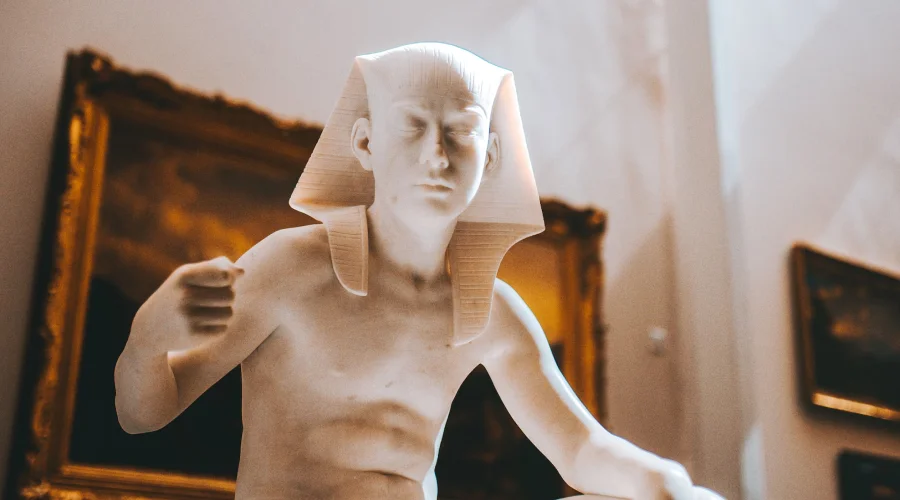
The Quai Branly – Jacques Chirac Museum
The Quai Branly – Jacques Chirac Museum, often simply referred to as the Musée du Quai Branly, is a renowned institution nestled in the heart of Paris, France. This museum, dedicated to the arts and cultures of Africa, Asia, Oceania, and the Americas, serves as a bridge between different civilizations and a testament to the diversity of human creativity. In this comprehensive report, we will delve into the museum’s history, architecture, collections, educational initiatives, and its role in celebrating and preserving the world’s cultural heritage.
What is the story behind the Quai Branly?
The Quai Branly – Jacques Chirac Museum opened its doors to the public in 2006. It was conceived as a space to showcase the vast collection of indigenous art and artifacts acquired by the French government over centuries of exploration and cultural exchange. The museum was named after former French President Jacques Chirac, who championed its creation.
Architectural Marvel
One of the museum’s distinctive features is its architectural design, which was the collaborative effort of architect Jean Nouvel, scenographer Pierre-Yves Rochon, and museographer Jean-Michel Wilmotte. The building’s design combines modernity with respect for the environment. Its “green wall,” covered in lush vegetation, provides a striking contrast to the glass facades and steel beams, creating a harmonious blend of nature and contemporary design.
Collections of the Quai Branly
- African Art: The museum boasts an impressive array of African art, including masks, sculptures, textiles, and jewelry. These pieces represent the rich cultural and artistic traditions of the continent.
- Asian Art: The Asian collection spans centuries and includes items from East Asia, South Asia, Southeast Asia, and the Himalayas. It encompasses everything from intricate textiles to intricate sculptures.
- Oceanic Art: Indigenous art from the Pacific Islands is well-represented, with pieces ranging from intricately carved figures to decorative objects that reflect the islands’ diverse cultures.
- Indigenous American Art: The museum’s collection of Indigenous American art features works from North and South America, including textiles, pottery, and sculptures that highlight the cultural diversity of the Americas.
Educational Initiatives
The Quai Branly Museum is dedicated to fostering an understanding of the world’s diverse cultures. Its educational initiatives include:
- Exhibitions: The museum hosts a rotating series of exhibitions that explore various aspects of indigenous art, culture, and history.
- Educational Programs: These programs cater to visitors of all ages, offering workshops, lectures, guided tours, and activities designed to engage and educate.
- Research and Documentation: The museum’s commitment to research includes a comprehensive library and an extensive database, allowing scholars and researchers to delve deeper into the museum’s collections.
Where is the Quai Branly- Jacques Chirac Museum situated?
The Quai Branly – Jacques Chirac Museum is located at 37 Quai Branly 75007 Paris, France.
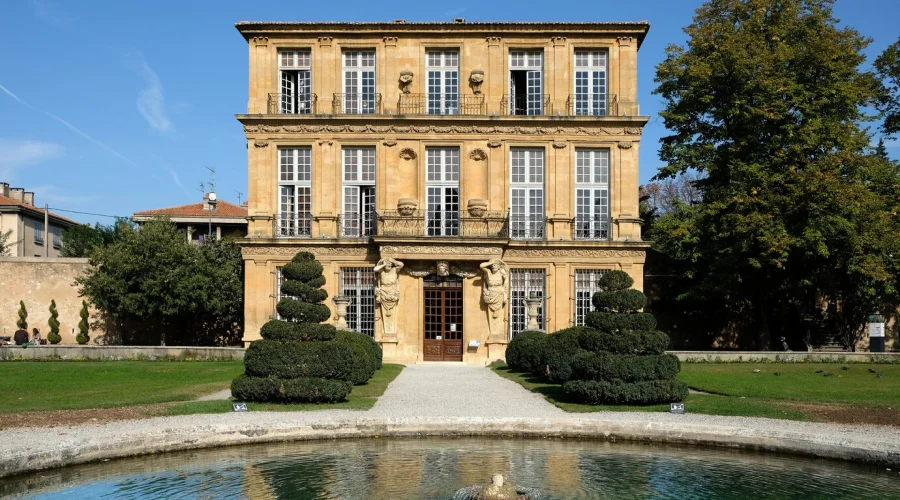
Musée de l’Orangerie
Nestled in the heart of Paris, the Musée de l’Orangerie is an artistic gem known for its rich history, impressive art collection, captivating architecture, special exhibitions, and splendid location. Here, we take you on a journey through the layers of this unique museum.
What is the story behind the Musée de l’Orangerie?
The Musée de l’Orangerie was originally built in the 19th century to shelter the orange trees of the Tuileries Garden, just west of the Louvre. It’s a testament to Napoleon III’s vision and was designed by architect Firmin Bourgeois. This elegant building, with its harmonious blend of iron and glass, served a horticultural purpose until it was repurposed as an art museum.
The Art Collection of Musée de l’Orangerie
One of the most renowned aspects of the Musée de l’Orangerie is its stunning collection of Impressionist and Post-Impressionist art. It is home to a series of eight enormous Water Lilies paintings by Claude Monet, which are displayed in two specially designed oval rooms. The experience of standing amidst these masterpieces, with the diffused natural light pouring in from above, is nothing short of breathtaking.
The museum also houses a significant collection of works by other prominent artists, including Renoir, Cézanne, Picasso, Rousseau, and more. It provides a unique opportunity to immerse yourself in the world of these artistic giants.
Architecture of the Musée de l’Orangerie
The architecture of the Musée de l’Orangerie is a marvel in itself. The design of the building beautifully integrates art and nature. Its large windows and glass ceilings not only allow for an abundance of natural light but also create an inviting connection to the surrounding Tuileries Garden. The marriage of classic and modern architecture makes it an architectural jewel in the heart of Paris.
Musée de l’Orangerie Special Exhibitions
While the Water Lilies hold a permanent place of honor, the Musée de l’Orangerie also hosts various temporary exhibitions throughout the year. These exhibitions often focus on different periods, styles, or artists, making each visit a fresh experience. Whether you’re interested in retrospectives of famous painters or exploring new artistic horizons, the museum’s special exhibitions provide a diverse and enriching experience.
Where is the Musée de l’Orangerie situated?
The Musée de l’Orangerie enjoys a prime location in the 1st arrondissement, making it easily accessible for both locals and tourists. Situated between the Louvre and Place de la Concorde, it is part of a hub of culture, history, and elegance. After your visit, you can take a leisurely stroll in the Tuileries Garden, savor a cup of coffee in a nearby café, or explore the neighboring attractions.
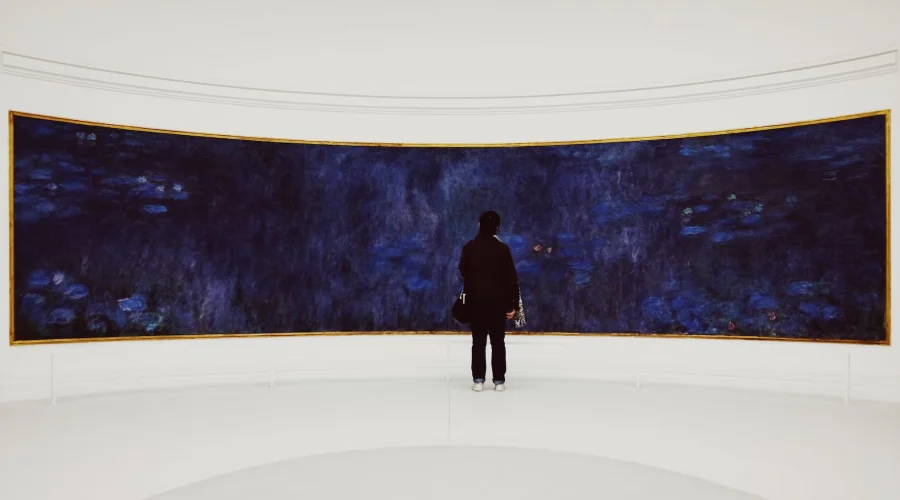
Conclusion of Parisian Museums
France’s museums are not only repositories of historical artifacts and art but also living educational institutions that celebrate the nation’s cultural heritage. From the iconic Louvre and Musée d’Orsay to the opulent Palace of Versailles and the Musée du Quai Branly, these museums offer a window into the past, an appreciation of artistic mastery, and a celebration of cultural diversity. They serve as beacons of enlightenment, encouraging visitors from around the world to explore, learn, and appreciate the richness of France’s artistic and historical legacy. France’s museums are a testament to the enduring value of culture, education, and the preservation of heritage.







